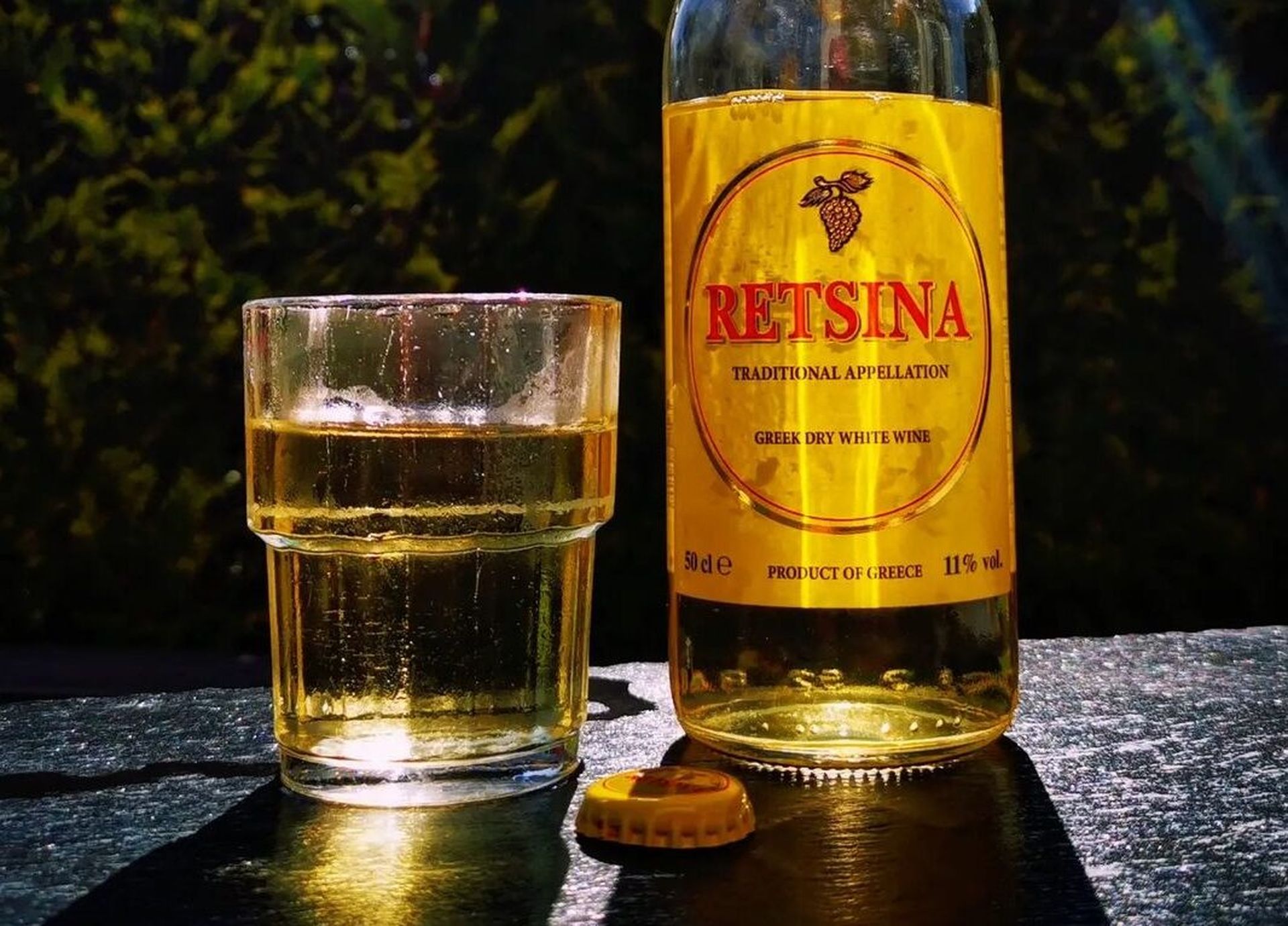Are you ready to embark on a journey through time and taste? Look no further, because we’ve got everything you need to know about Retsina, the enchanting ancient Greek wine. The common people and the aristocracy enjoy this distinctive wine, which has a long history dating back to ancient Greece. Retsina is unlike any other wine you’ve ever tasted because of its distinctive flavor, which results from adding pine resin to fermenting grape juice. So, join us as we uncover the secrets behind this ancient Greek treasure. Cheers!
History of Retsina
Let’s explore the fascinating history of Retsina, the ancient Greek wine. Ancient Greece has a long and storied relationship with wine, with evidence of wine production dating back thousands of years. Retsina, in particular, has an interesting anecdotal history, often associated with the resin used to seal wine amphorae in ancient times, giving the wine its unique flavor profile.
Ancient Greece and wine
During ancient times, the Greeks developed and popularized the production of Retsina, a unique wine infused with the resin of pine trees. This ancient Greek wine holds deep historical significance, with its origins dating back to at least 2000 BC. Retsina was typically made by fermenting white wine with the addition of pine resin, which preserved the wine and imparted a distinctive flavor and aroma.
What sets Retsina apart is its unmistakable taste. The resin adds a resinous, pine-like character to the wine, giving it a refreshing and aromatic quality. Some describe it as herbaceous, with hints of citrus and a slightly savory note. The wine’s unique flavor profile has made it a beloved staple in Greek culture, evoking a sense of tradition and belonging.

Anecdotal history
Popular anecdotes about the evolution of retsina stem from the Roman conquest of Greece. Stories claim that the Romans plundered the wines of Greece, angering the citizens, who turned to pine resin as a way of extending their store of wine and as a deterrent to their thirsty conquerors. The harsh flavor was said to put off the Romans, who refused to drink the bitter ferment. Another anecdote claims that an excess of undiluted retsina was lethal for King Eric I of Denmark and Sigurd I of Norway.
Retsina Wine regions
One popular region for Retsina wine production is Attica, known for its distinctive style and long-standing tradition in crafting this unique Greek wine. Attica, located in southeastern Greece, has many vineyards specializing in Retsina production. The region’s proximity to the Aegean Sea and its favorable climate contribute to the quality of the grapes used in making Retsina.
Only Retsina produced in Greece can carry the indication “Traditional Designation (as is also the case with verdea wine). The areas best known for their Retsina production and permitted to carry their designation on the label of Retsina are all in Central Greece:
Attica (mainly the area of Mesogia)
Viotia
Evia
Attica’s commitment to preserving the traditional methods of Retsina production ensures that each bottle captures the essence of this ancient Greek wine. Whether you’re a wine enthusiast or simply curious about Greek culture, exploring the Retsina wines of Attica is a delightful way to experience the flavors of Greece.
The Grapes of Retsina and winemaking
To understand Retsina wine, exploring the grapes used and the winemaking process is important. Retsina is an ancient Greek wine with a distinct flavor profile that is often associated with Greek cuisine. The grapes used to make Retsina vary, but the most common varieties include Savatiano and Roditis.
These grapes are known for their ability to withstand the harsh climate of Greece and produce wines with high acidity. In the winemaking process, the grapes are harvested and then fermented with their skins and stems intact. This allows for the extraction of flavors and aromas that contribute to the unique character of Retsina.
After fermentation, the wine is often aged in oak barrels, which adds complexity to its flavor. Retsina is typically served chilled and pairs well with Mediterranean dishes, making it a popular choice for those seeking a truly Greek experience.
The Taste of Retsina
When tasting Retsina, you can expect a unique and distinct flavor profile characterized by a sharp, bracing pungency. The taste of Retsina is like no other, offering a sense of strength and vitality that will leave you wanting more. Its flavor is bold and refreshing, with a crisp and tangy quality that invigorates the palate.
Retsina is best served chilled, which enhances its vibrant taste and brings out its natural aromas. As you sip on this ancient Greek wine, you may also appreciate its health benefits, as it is believed to have antioxidant properties that can promote overall well-being. So go ahead, serve yourself a glass of Retsina, and experience the taste of Greece in every sip.
Malamatina Retsina
Malamatina Retsina is a popular Greek wine that has undergone a modern transformation. Greeks have long enjoyed this wine, which is now becoming more well-known worldwide due to its distinctive pine resin flavor. This renowned brand has been producing Retsina since 1908 and is known for its high-quality and traditional approach.
Malamatina retsina is made using traditional methods, with the resin added during fermentation to give it its distinct taste. It is available in different grades, from entry-level to premium options, allowing you to choose the one that suits your taste and budget. So, why not join the growing number of wine enthusiasts and experience the modern appeal of Malamatina Retsina?

Retsina Food Pairings
When it comes to serving Retsina, there are a few key points to consider. First, Retsina is best served chilled, around 8–10 degrees Celsius, to enhance its refreshing qualities. Second, pairing Retsina with Greek cuisine is often recommended, as its unique flavor profile complements dishes like grilled seafood, tzatziki, and feta cheese. Lastly, Retsina’s natural acidity and herbal notes make it a versatile option for pairing with a wide range of Mediterranean-inspired dishes.
How to Serve Retsina
To serve Retsina and find the perfect food pairings, consider this ancient Greek wine’s unique flavors and characteristics. Retsina is typically a light- to medium-bodied wine with a distinct resinous flavor imparted by the pine resin used during winemaking. When serving Retsina, keep in mind the following:
- Chill it: Retsina is best served chilled, around 45–50°F (7–10°C), to enhance its refreshing qualities.
- Pair it with Greek cuisine: Retsina pairs exceptionally well with traditional Greek dishes such as grilled seafood, lamb souvlaki, feta cheese, and spanakopita.
- Experiment with flavors: The resinous notes of Retsina can complement a wide range of flavors, making it a versatile wine to pair with dishes that have herbal, citrusy, or earthy components.
Does Retsina have health benefits?
Discover the potential health benefits of Retsina and explore its perfect food pairings to enhance your dining experience. Retsina, a traditional Greek wine, has been enjoyed for centuries and is known for its unique flavor and aroma. But does Retsina have any health benefits? While more research is needed, some studies suggest that moderate consumption of red wine, which shares some similarities with Retsina, may have heart-healthy properties.
Additionally, Retsina is made from the resin of pine trees, which contains antioxidants that could have anti-inflammatory effects. As for food pairings, Retsina complements a variety of dishes, especially those with strong flavors like grilled meats, seafood, and Greek cuisine. So, next time you indulge in a glass of Retsina, not only will you be enjoying its distinct taste, but you may also be reaping some potential health benefits. Cheers!
Retsina Aging potential
Retsina wine has a significant aging potential, allowing it to develop complex flavors and aromas over time. As the wine matures, it transforms, enhancing its overall character and quality. Here are some key points to understand about Retsina’s aging potential:
- Aging process: Retsina wine benefits from aging in oak barrels or stainless steel tanks, depending on the desired style and flavor profile.
- Flavor development: With time, Retsina develops a smoother and more balanced taste, with the resinous notes mellowing out and integrating seamlessly with the wine’s fruitiness.
- Aroma complexity: The aging process allows Retsina to develop a more intricate bouquet, showcasing a harmonious blend of resin, citrus, herbal, and floral aromas.
Best Retsina Producers
As you explore the aging potential of Retsina wine, it’s worth noting the best producers who have mastered the art of crafting this ancient Greek wine. One of the top producers is Karama Winery, known for its high-quality Retsina that captures the essence of the traditional style.
Another notable producer is Dionysos Cellars, which offers a range of Retsina wines that showcase a diversity of flavors and aromas. Notos Retsina, produced by the esteemed Giannikos Winery, is also highly regarded for its exceptional craftsmanship.
These producers have dedicated themselves to preserving the authenticity and heritage of Retsina, creating wines that will make you feel connected to the rich Greek winemaking tradition. By supporting these producers, you can truly belong to the Retsina community and enjoy the best that this ancient wine has to offer.
Most Popular Retsina Wines
When exploring the world of Retsina wine, you’ll find that some of the most popular options come from esteemed Greek producers. These wines have gained popularity among wine enthusiasts who desire a sense of belonging and connection to Greek culture. Here are three of the most popular Retsina wines:
- Kourtaki: A well-known and widely available brand, Kourtaki offers a traditional Retsina with a distinct pine resin flavor and a refreshing acidity.
- Gaia: Known for their modern approach to winemaking, Gaia produces a Retsina that balances the traditional resin character with a clean and crisp taste, appealing to traditionalists and those seeking a more contemporary style.
- Papagiannakos: This family-owned winery crafts a Retsina with a delicate balance of resin and fruit flavors, showcasing the unique characteristics of the Savatiano grape.
These popular Retsina wines provide a delightful tasting experience while also allowing you to feel a connection to Greek wine traditions.
Retsina FAQ
Explore the intricacies of Retsina with these Frequently Asked Questions.
- What is Retsina?
Retsina is a Greek wine that is made by adding pine resin to the fermenting grape juice, resulting in a distinct flavor profile.
- Why does Retsina have a resin flavor?
The resin flavor in Retsina is not overpowering but adds depth and complexity to the wine. It pairs well with Greek cuisine and can be a delightful addition to any meal.
Retsina is a traditional Greek wine that has been enjoyed for centuries. It is known for its distinctive resin flavor, which comes from a unique winemaking process. During fermentation, small pieces of Aleppo pine resin are added to the wine, giving it a distinct and aromatic taste.
- How should Retsina be served?
To fully enjoy Retsina, serving it chilled, around 8-10 degrees Celsius is recommended. This temperature allows the flavors to shine and enhances the overall experience of drinking Retsina.
- How to drink Retsina?
Retsina is best enjoyed chilled, and it pairs well with Mediterranean cuisine, such as seafood and salads.
- What does Retsina wine taste like?
Retsina has a distinctive taste characterized by a resinous aroma and a crisp, refreshing flavor with hints of pine.
- What is Retsina made of?
Retsina is made from Greek grape varieties, such as Savatiano, and is infused with pine resin during winemaking.
- How to make Retsina:
Making Retsina involves fermenting grape juice with pine resin, which gives the wine its unique flavor and aroma.
If you wish, you can also read our content titled Montalcino 101: Everything You Need to Know About the Most Loved Tuscan Red Wine in the World and get detailed information about Montalcino wine.







